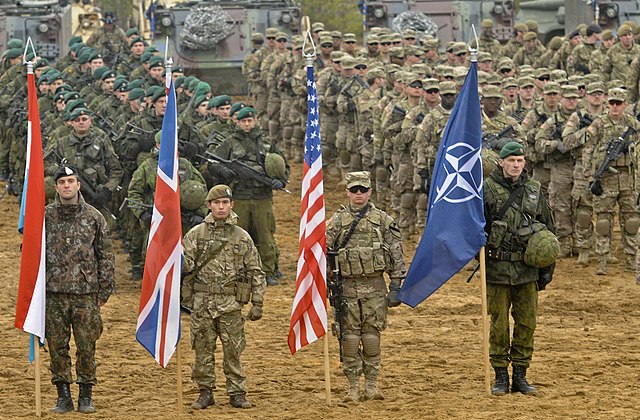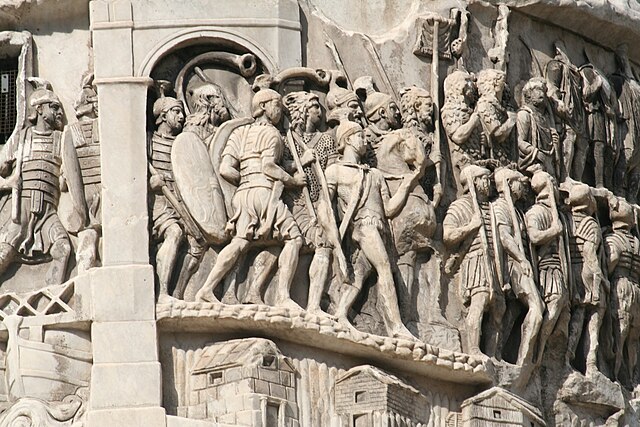A commander-in-chief or supreme commander is the person who exercises supreme command and control over an armed force or a military branch. As a technical term, it refers to military competencies that reside in a country's executive leadership, a head of state, head of government, or other designated government official.
Argentine president Carlos Menem presiding over an Argentine Air Force ceremony for the Falklands War in May 1997.
Governor General of Australia The Lord Gowrie (right) signing the declaration of war against Japan with Prime Minister John Curtin (left) looking on. (8 December 1941)
President Alexander Lukashenko wearing the official uniform of the commander-in-Chief of the Armed Forces of Belarus.
Chairman of the Presidency of Bosnia and Herzegovina Alija Izetbegović (right) meeting with US president Bill Clinton (left) in 1997 in Tuzla.
A military, also known collectively as an armed forces, are a heavily armed, highly organized force primarily intended for warfare. Militaries are typically authorized and maintained by a sovereign state, with their members identifiable by a distinct military uniform. They may consist of one or more military branches such as an army, navy, air force, space force, marines, or coast guard. The main task of a military is usually defined as defence of their state and its interests against external armed threats.
NATO military ceremony in Pabrade, Lithuania, November 2014
Relief scene of Roman legionaries marching, from the Column of Marcus Aurelius, Rome, Italy, 2nd century AD
Depiction of ancient Egyptian military formation
Finnish and American soldiers training together in arctic conditions in Lapland, Finland, January 6–16, 2015








